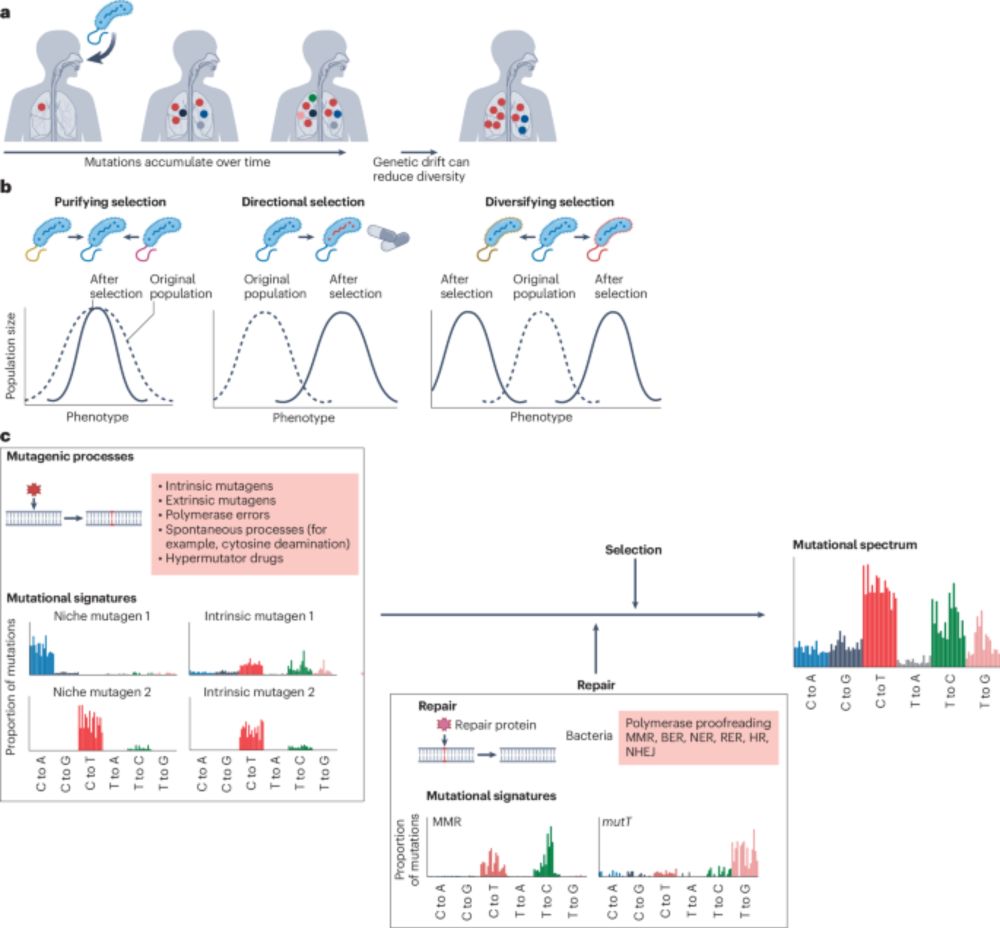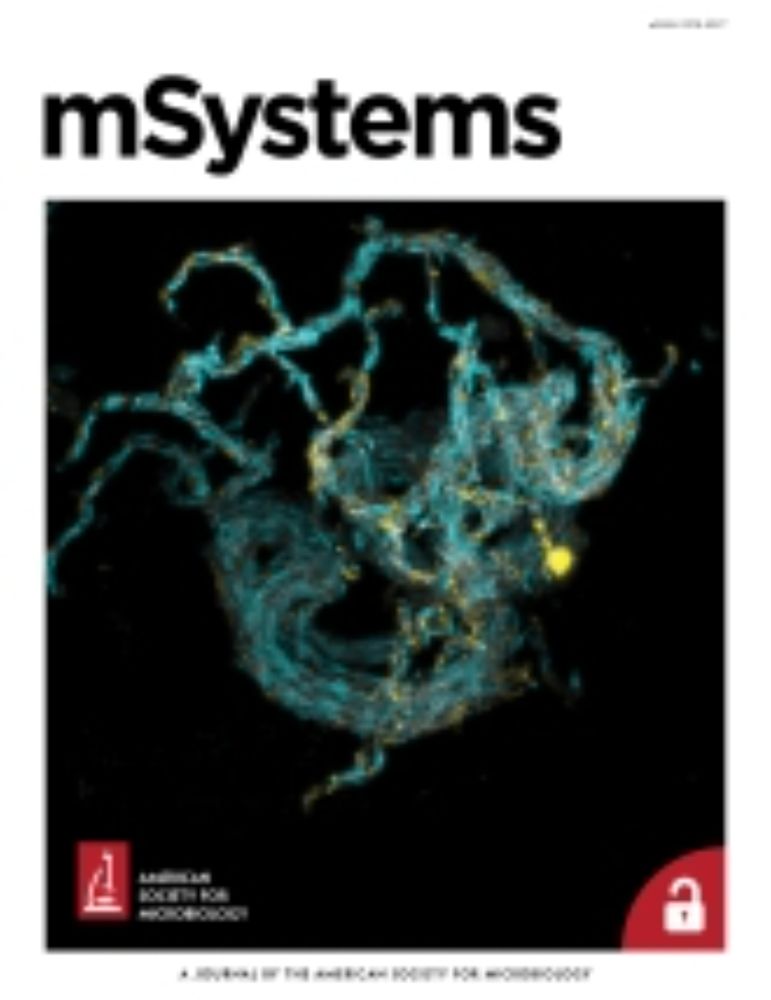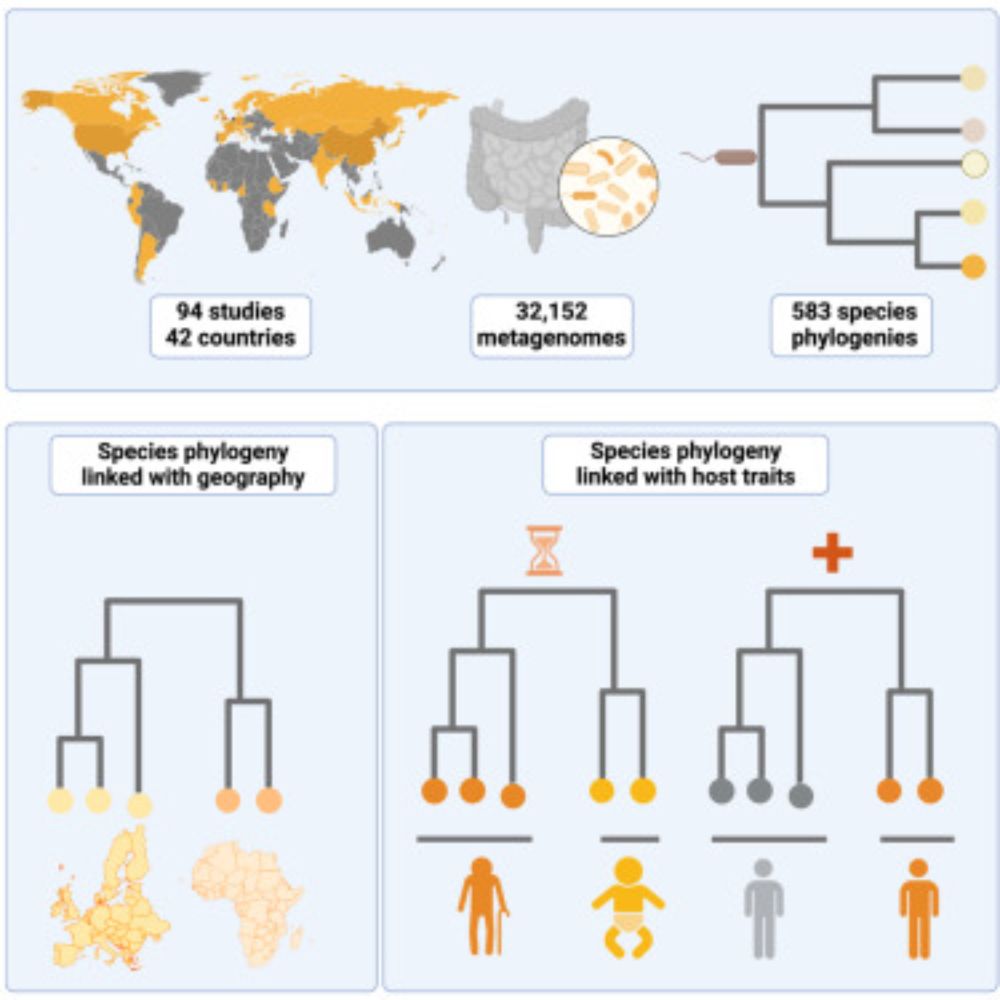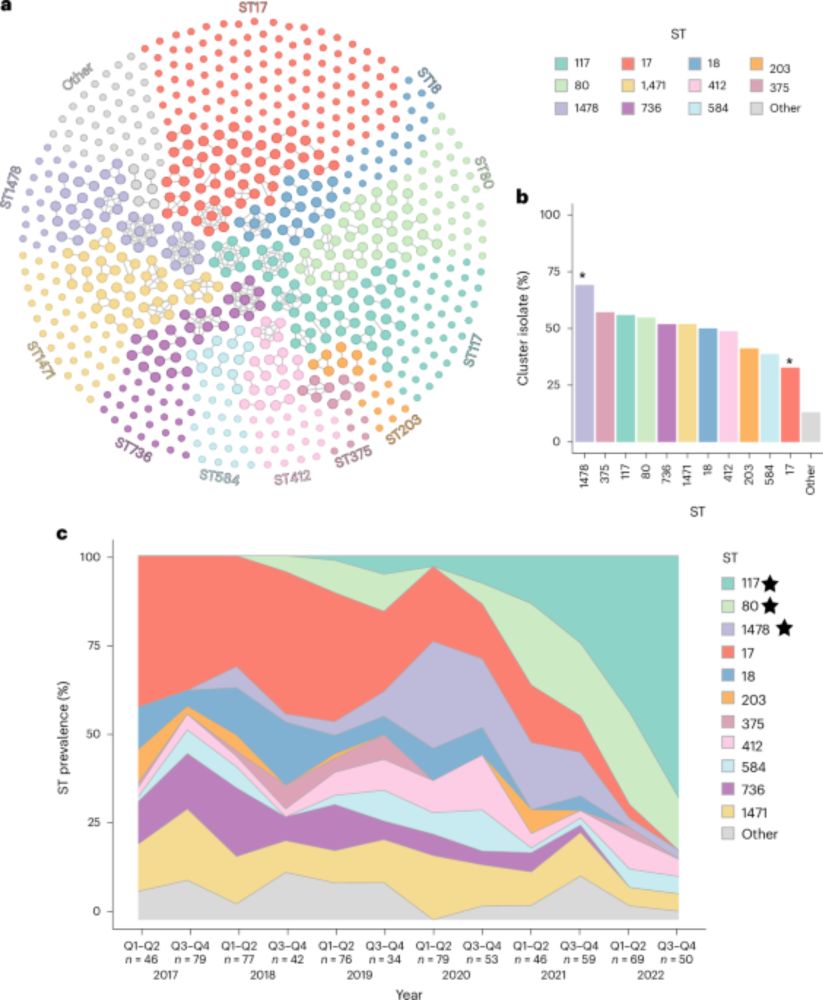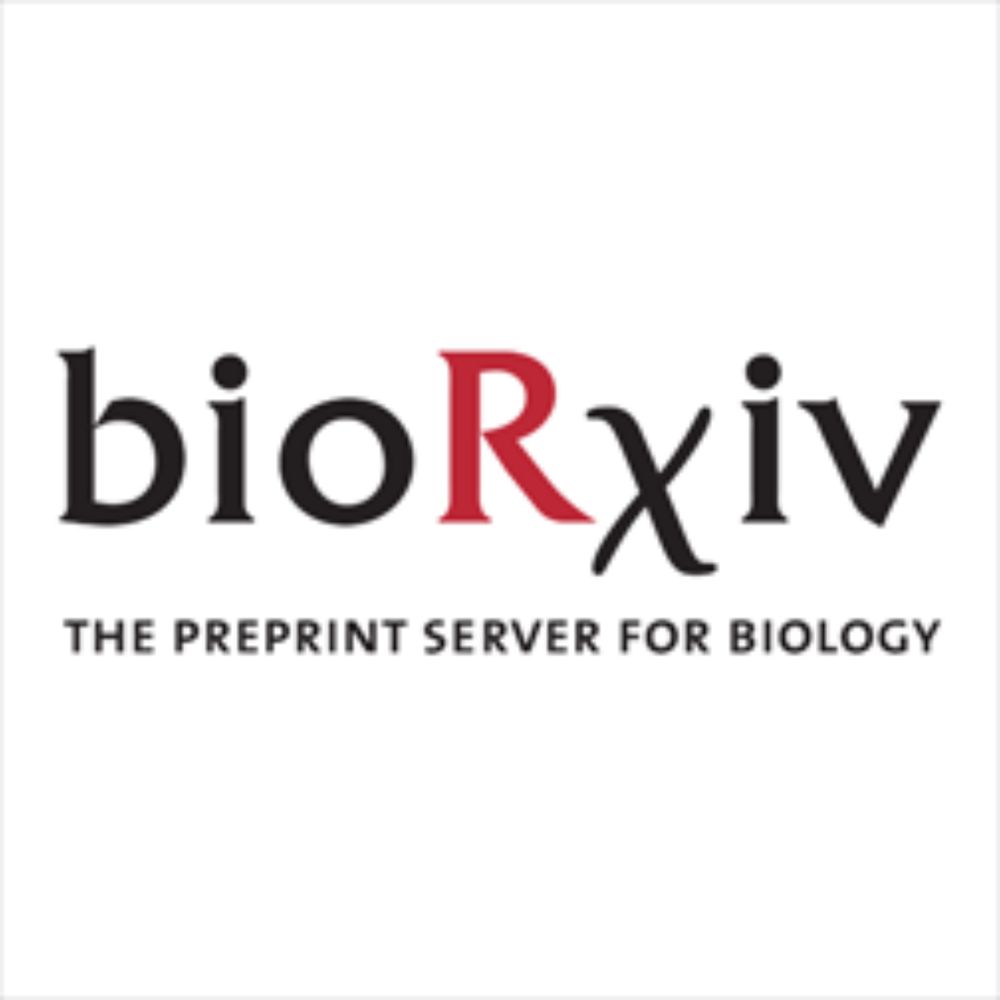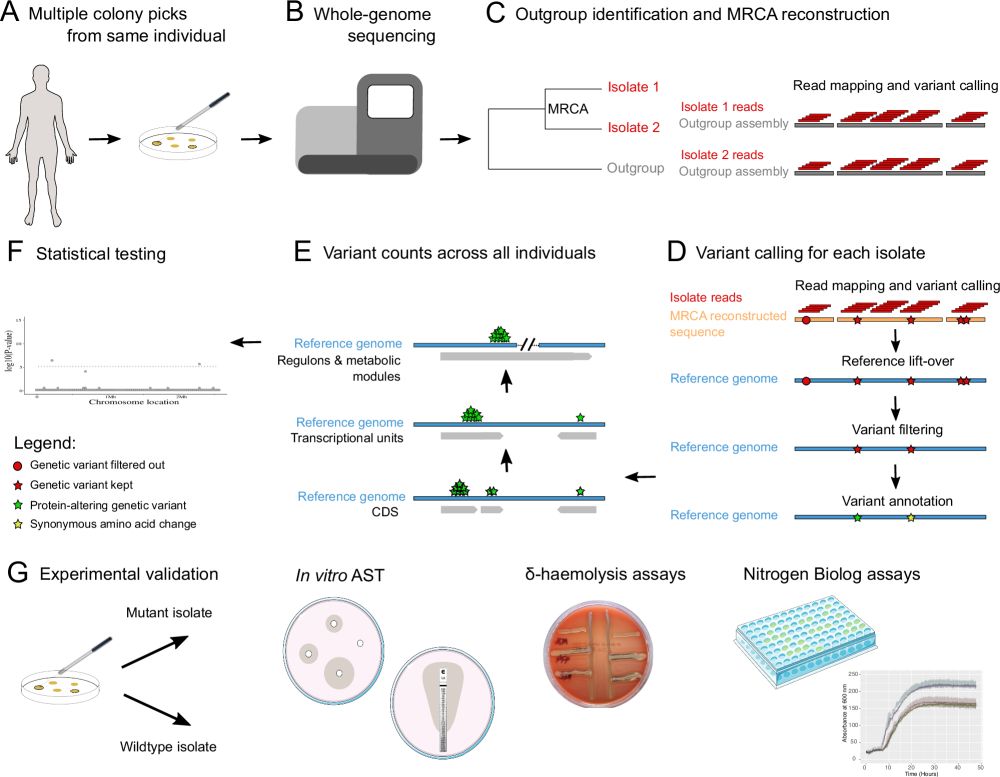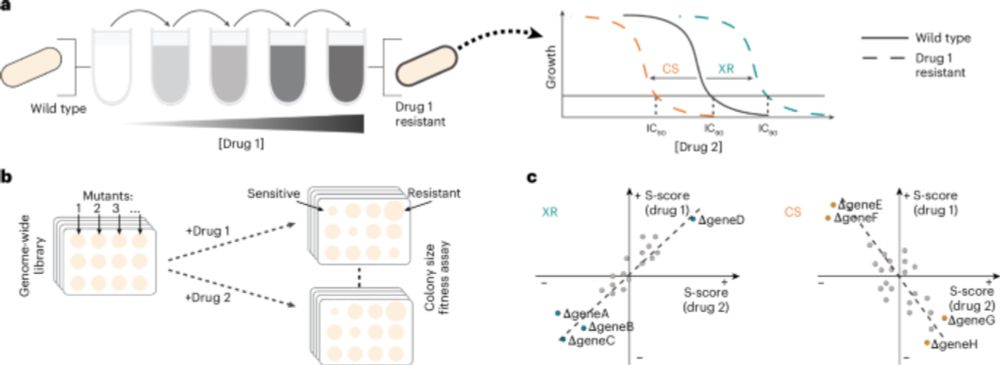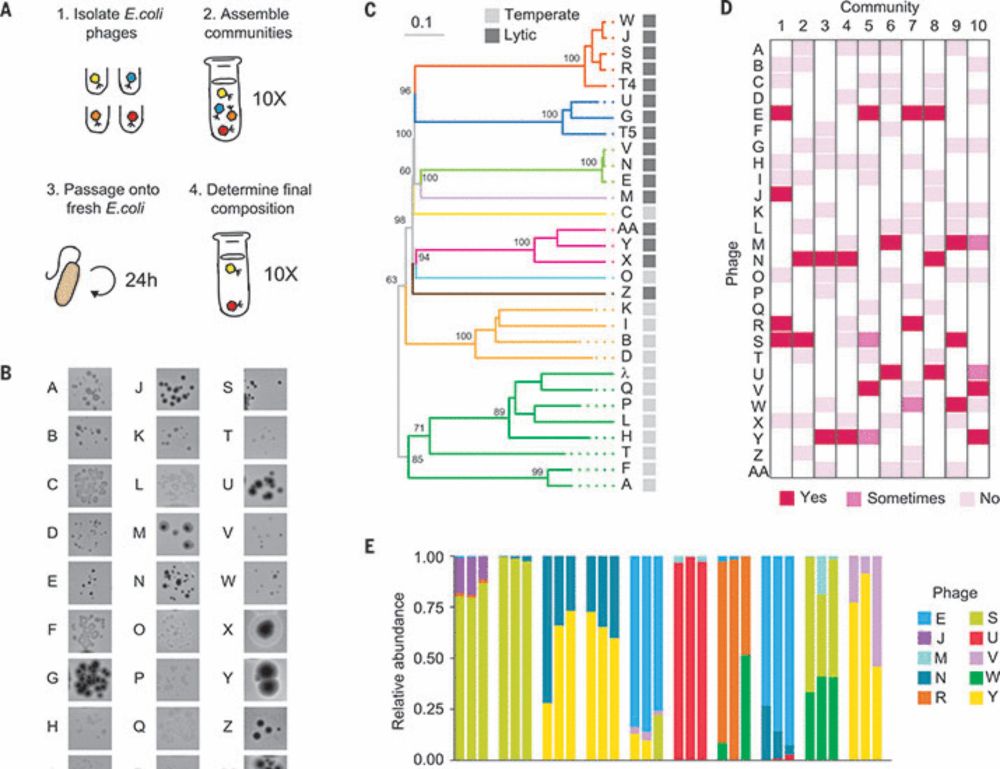Our high-precision metagenomic strain caller, PHLAME, is now published in Cell Reports!! www.cell.com/cell-reports...
PHLAME works on tough sample types -- including those with coexisting strains of a species and low depth.
15.08.2025 16:33 — 👍 47 🔁 26 💬 2 📌 0
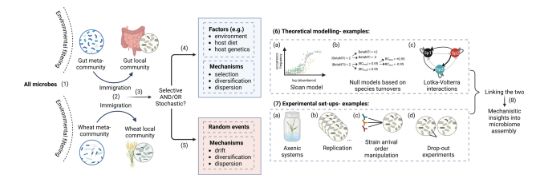
Mechanisms of microbiome assembly and approaches to uncover the ecological forces driving it.
Deriving ecological models solely from observational data limits our ability to understand mechanisms driving microbiome assembly. This #mSystems articles explores how experimental approaches can address these challenges. asm.social/2wj
30.07.2025 15:26 — 👍 11 🔁 8 💬 1 📌 0
Our paper demonstrating that within-species warfare interactions are ecologically important on human skin is now published in Nature Micro! www.nature.com/articles/s41...
30.06.2025 12:26 — 👍 218 🔁 97 💬 10 📌 3
This is such a cool read on the fascinating topic of nutrient competition in microbiomes😍 I couldn t agree more with «A key challenge in understanding microbiomes is that the species composition often differs among individuals, which can thwart generalization. »
13.06.2025 20:19 — 👍 1 🔁 0 💬 0 📌 0
1/6 Excited to share our review 🚀
🧬 CRISPR–Cas therapies targeting bacteria!
#MicroSky
15.05.2025 06:53 — 👍 63 🔁 35 💬 1 📌 3
Very interesting! Congratulations:)
21.03.2025 16:02 — 👍 1 🔁 0 💬 0 📌 0
Community stability is usually assessed by invading single species from rare and measuring relative fitness. However does this hold up when multiple species invade from rare? We test this using our super stable microbial community 👇🏻
03.03.2025 13:05 — 👍 18 🔁 8 💬 1 📌 1
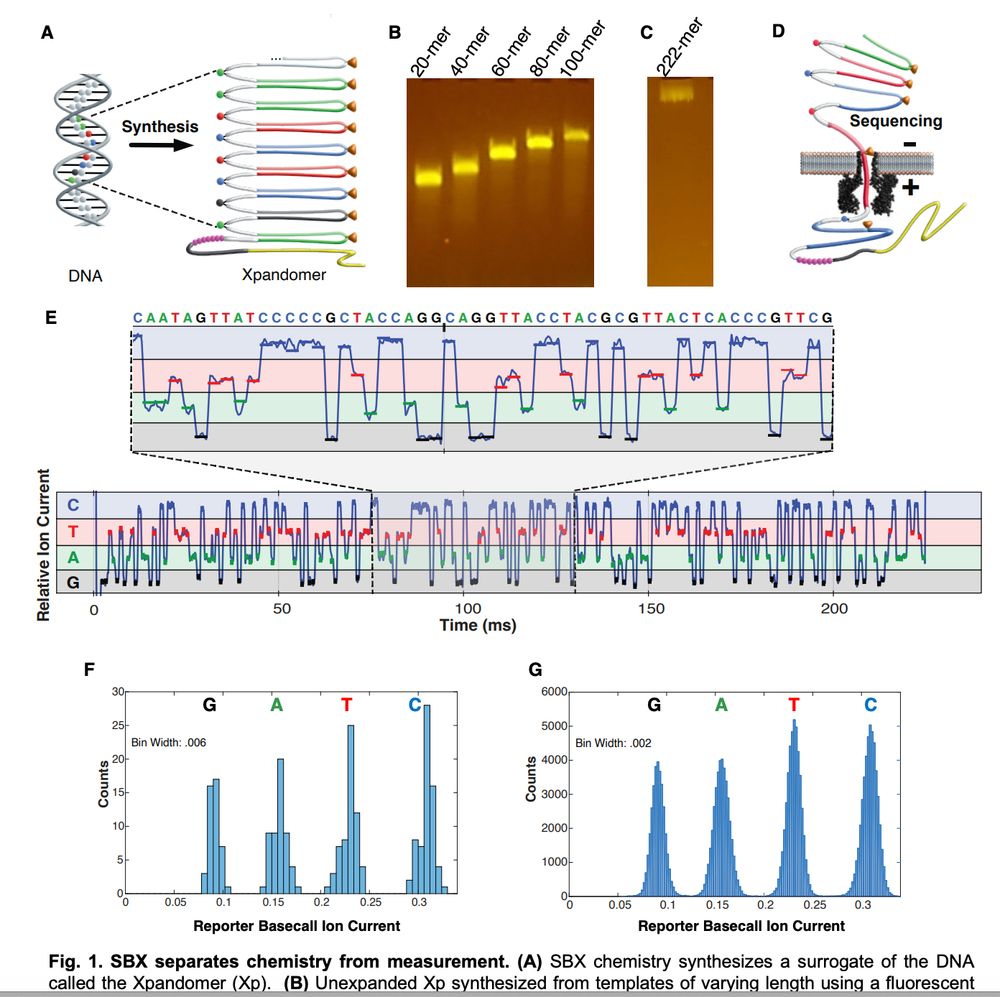
Roche's SBX sequencing by expansion - preprint out!
www.biorxiv.org/content/10.1...
24.02.2025 23:00 — 👍 81 🔁 44 💬 3 📌 1
vacancies — Foster Lab
job vacancies in the Foster lab
The Oxford U. Foster and Slack labs are hiring! A chance to work in bleeding edge microbiome science with some really great mentors @mucosalimmunology.bsky.social
www.fosterlab.uk/vacancies
26.02.2025 10:18 — 👍 9 🔁 6 💬 0 📌 0
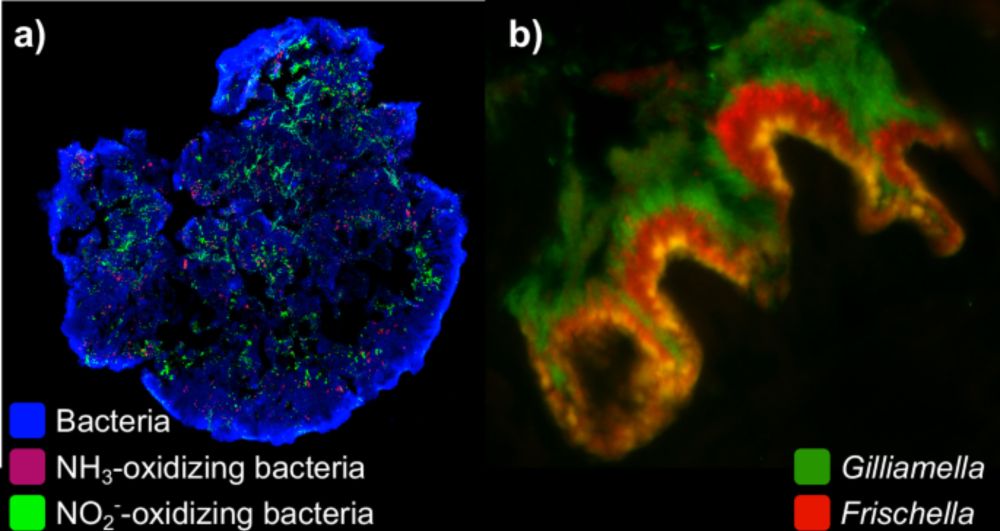
Disentangling the feedback loops driving spatial patterning in microbial communities - npj Biofilms and Microbiomes
npj Biofilms and Microbiomes - Disentangling the feedback loops driving spatial patterning in microbial communities
Two (!) perspective pieces published today involving people from our lab! @adelpanta.bsky.social on spatial patterning in microbial communities www.nature.com/articles/s41... and @salazarafra.bsky.social on microbial communities as evolutionary individuals www.sciencedirect.com/science/arti...
20.02.2025 14:41 — 👍 72 🔁 36 💬 2 📌 3

Lysis of Escherichia coli by colicin Ib contributes to bacterial cross-feeding by releasing active β-galactosidase
Abstract. The diffusible toxin ColIb produced by Salmonella enterica serovar Typhimurium SL1344 is a potent inhibitor of Escherichia coli growth. To identi
Really exciting work:
The Salmonella Colicin Col1b cannot only KILL a competing E. coli population, but also AMPLIFY metabolic contributions of susceptible bacteria by liberating β-gal…
From @nic-ler.bsky.social. @kroegerlab.bsky.social, Andrew Cameron and others ‼️
academic.oup.com/ismej/advanc...
23.02.2025 12:07 — 👍 16 🔁 6 💬 0 📌 1
Our special feature/passion project at AmNat, "Demystifying fundamental theories in ecology", co-organized with @sebastianschreiber.bsky.social is out now 🤩 www.journals.uchicago.edu/toc/an/2025/...
19.02.2025 19:48 — 👍 57 🔁 28 💬 2 📌 1

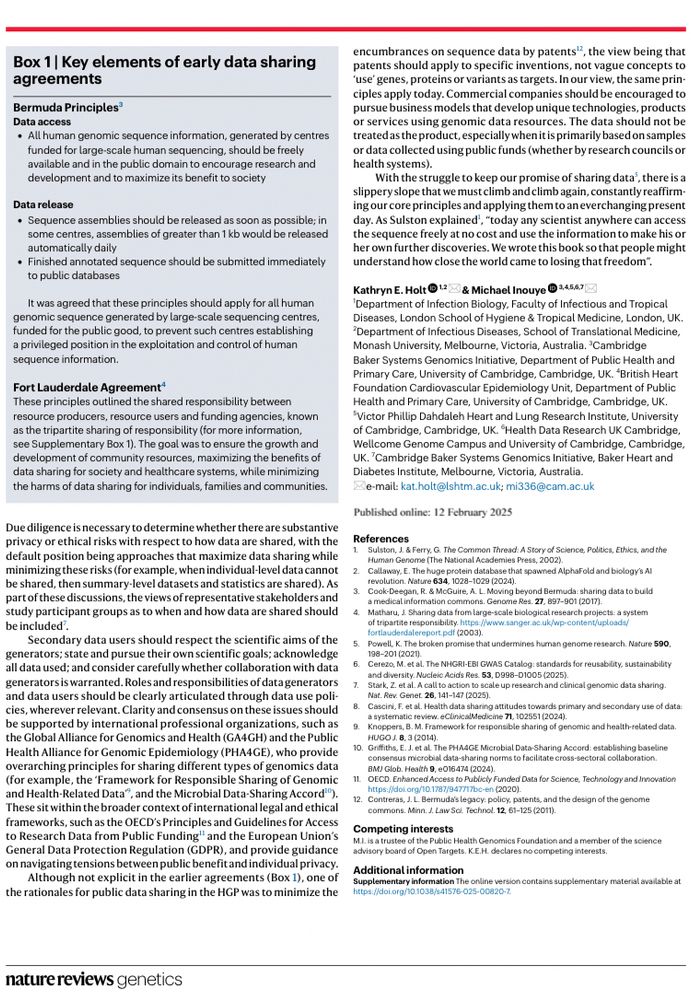
📣📣Genomic data sharing: you don’t know what you’ve got (till it’s gone) www.nature.com/articles/s41...
A comment @natrevgenet.bsky.social from @katholt.bsky.social and me
13.02.2025 09:10 — 👍 44 🔁 29 💬 3 📌 1

Staphylococcus haemolyticus is a reservoir of antibiotic resistance genes in the preterm infant gut
Among coagulase-negative staphylococci, Staphylococcus haemolyticus is a primary cause of bloodstream infections in preterm infants, with gut colonisation being recognised as a risk factor for subsequent infection. Through a re-analysis of a 16S rRNA gene sequencing dataset (n=497 preterm infants), we found that S. haemolyticus was abundant and prevalent in the gut in the first month of life. To better understand the diversity of S. haemolyticus among preterm infants, we generated genome sequences of S. haemolyticus strains (n=140), which were isolated from 44 stool samples of 22 preterm infants from four different hospitals in the United Kingdom. Core genome phylogenetic analyses, incorporating 126 publicly available S. haemolyticus genome sequences, showed that 85/140 (60.1%) of the isolates, from three different hospitals, formed a clonal group with 79/85 (92.9%) strains being assigned to Multi-Locus Sequence Type (ST) 49. Antibiotic resistance genes were highly prevalent in the genome sequences. Using logistic regression, we found a strong association between the presence of the gene mecA and phenotypic resistance to oxacillin (odds ratio [OR]: 158.00, p<0.0001), and the aacA-aphD gene and phenotypic resistance to gentamicin aacA-aphD (OR: 162.00, p<0.001). None of the strains from the preterm infant cohort had a complete Staphylococcal Cassette Chromosome mec (SCCmec) element. The aacA-aphD gene was associated with the transposon Tn4001. Using hybrid genome assemblies, we found it to be present on the chromosome (54.5% of strains) or on diverse plasmids (27.3%). Four strains (18.2%) had Tn4001 copies on both plasmid and chromosome. Our data suggest the existence of a distinct sub-population of S. haemolyticus that has adapted to colonise the gut of preterm infants. Prevalent resistance to antibiotics is of clinical concern and the diversity of genetic contexts of mecA and Tn4001 suggests widespread horizontal gene transfer and recombination in this species. ### Competing Interest Statement The authors have declared no competing interest.
New preprint from the group just landed
‘Staphylococcus haemolyticus is a reservoir of antibiotic resistance genes in the preterm infant gut’
www.biorxiv.org/content/10.1...
/1
27.01.2025 13:52 — 👍 42 🔁 10 💬 1 📌 2
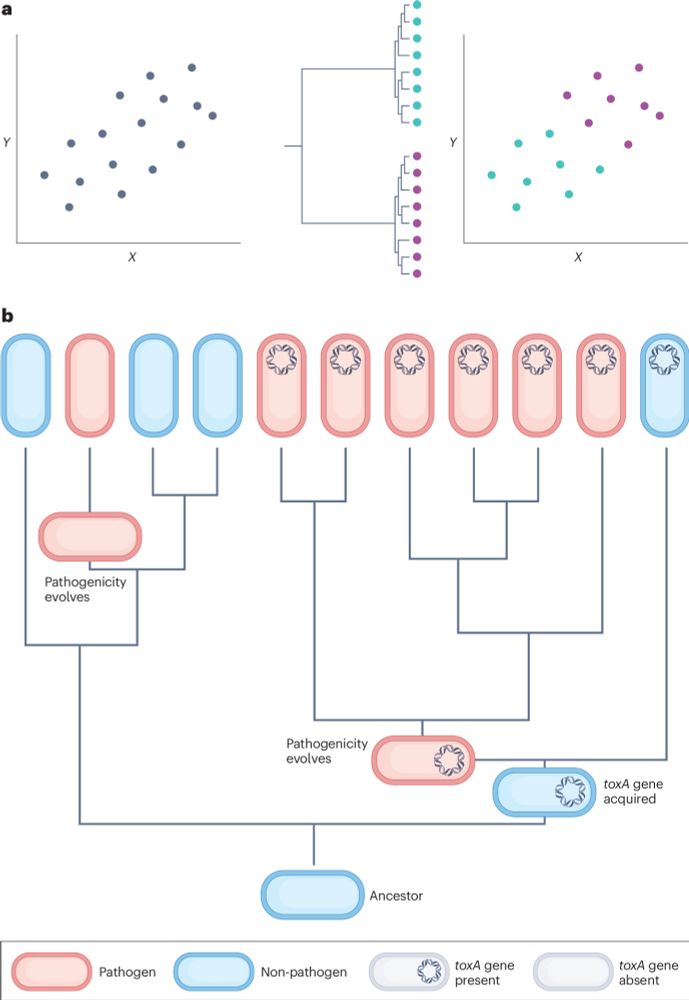
A phylogenetic approach to comparative genomics
Nature Reviews Genetics - Controlling for phylogeny is essential in comparative genomics studies, because species, genomes and genes are not independent data points within statistical tests. The...
Our review is out in Nature Reviews Genetics! rdcu.be/d5AY2
We show how phylogeny-based methods can resolve the problem of non-independence in genomic datasets.
These methods must be considered an essential part of the comparative genomics toolkit.
@lauriebelch.bsky.social @stuwest.bsky.social
08.01.2025 13:19 — 👍 170 🔁 84 💬 5 📌 3
@microbiologysociety.org Microbial Genomics is looking for new Senior Editors and Editors, particularly those with expertise across the breadth of eukaryotic microbiology, viral genomics, and ecological microbiology. Candidates can send their CVs and cover letters by Friday 17 January 2025!
08.01.2025 13:22 — 👍 16 🔁 15 💬 0 📌 1
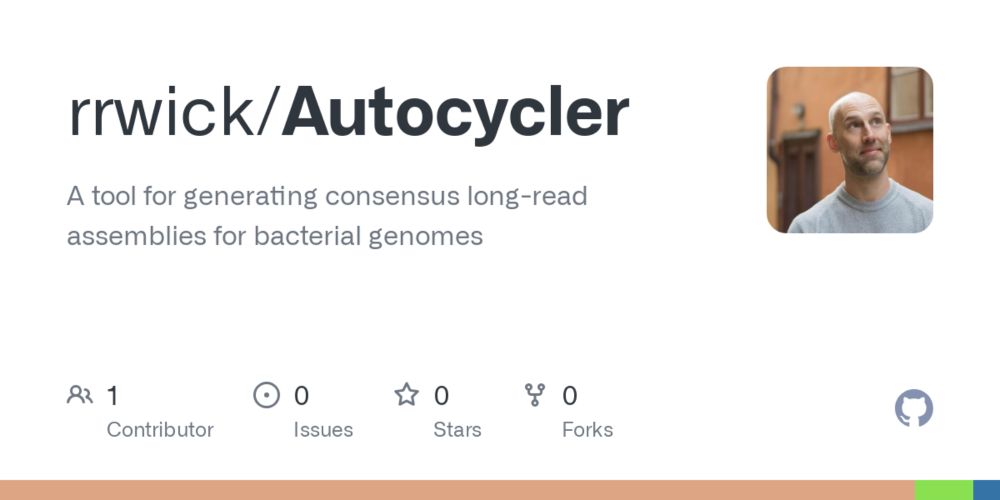
Home
A tool for generating consensus long-read assemblies for bacterial genomes - rrwick/Autocycler
New year, new assemblies!
I'm excited to announce Autocycler, my new tool for consensus assembly of long-read bacterial genomes!
It's the successor to Trycycler, designed to be faster and less reliant on user intervention.
Check it out: github.com/rrwick/Autoc...
(1/5)
31.12.2024 23:43 — 👍 156 🔁 97 💬 2 📌 3
Congrats🎆
01.01.2025 13:09 — 👍 1 🔁 0 💬 0 📌 0
MD, PhD. Postdoc in Slack and Sunagawa labs, ETH Institute of Microbiology. Typas lab alumna.
Bacteria as friends and foes.
#microbiomes #metagenomics #microbialecology #cinema #boardgames #women,life,freedom
Associate Professor at the CBRB at Imperial College London. Studying how gut microbiota-mediated colonisation resistance protects the host against infections. https://www.imperial.ac.uk/people/julie.mcdonald
Mum to 👦🏻👶🏻. Senior Research Fellow at the Centre for Genomic Pathogen Surveillance, University of Oxford. Bacterial genomes and AMR 🧬 🦠 Love running and the outdoors 🏃🏼♀️🌿
Postdoc researcher at Institut Pasteur | Bacterial genomics | Evolution, ecology and diversity of bacterial populations
Ecology and evolution of the human gut microbiome in Nandita Garud's lab at UCLA
Postdoctoral researcher at @raeslab.org, former Groningen Microbiome Hub.
(meta)Genomics, bioinformatics
Microbes & mucus 🤩 | Gut Microbial Ecology | Wageningen University, NL
Microbiologist interested in gut microbiota-pathogen interaction. Professor at TU Munich, PhD ETH Zurich, studies at LMU Munich and University of Warwick, UK.
Evolving better E. coli for 75,000 generations. Prof at MSU, but opinions my own. (Ok, I also speak for billions -- er, TRILLIONS -- of E. coli.)
Website for LTEE: the-ltee.org
Banner pic from NYC, shared by Darwin. (The microbiologist, not the other one.)
PhD student in microbial ecology and evolution at the University of Lausanne salazarafra.github.io | Literary fiction, philosophy & cinema
Microbiologist at UNIL Switzerland, interested in Microbiota-host interactions, symbiosis, evolution and genomics, and social bees
engelbeelab.com
Evolutionary microbiologist. Bacterial social life, virulence, drug resistance.
Computational biologist interested in bacterial genomics, bacterial adaptation and antibiotic resistance. @IBV_CSIC
Dr Gemma Langridge's bacterial niche adaptation lab group based @quadraminstitute.bsky.social
Microbiologist group leader (@langridgelab.bsky.social) at the Quadram Institute, mum to two, dark chocolate addict. She/her
🦠🧬🖥️ Microbial bioinformatics PostDoc
@JLUGiessen, WGS bacteria, plasmids, software/pipeline developer, father of 2, husband, astrophotographer

